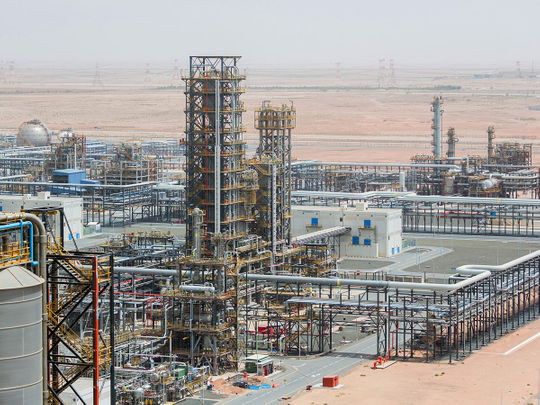
London: Oil prices fell more than 1 per cent on Tuesday, with benchmark Brent crude slipping below $70 per barrel and US crude under $60, after US President Donald Trump put pressure on Organisation of the Petroleum Exporting Countries (Opec) not to cut supply to prop up the market.
The US dollar hovered near 16-month highs, making oil more expensive for importers using other currencies.
Brent was down $1.03 at $69.09 per barrel by 0900 GMT. US light crude was $1.00 lower at $58.93. Both benchmarks are down 20 per cent since peaking at four-year highs in early October.
“Sky-high production in the US, coupled with incremental barrels coming from Saudi Arabia and Russia, is starting to impact oil market balances,” Bank of America Merrill Lynch analysts said in a note to clients, adding: “Crude oil inventories are starting to increase once again.” Trump has made it clear he wants oil prices to fall.
“Hopefully, Saudi Arabia and Opec will not be cutting oil production. Oil prices should be much lower based on supply!” the president said in a Twitter post on Monday.
That led to a sharp price drop on Monday and the sell-off continued into Tuesday.
“This tweet certainly did not help prices,” ING commodities strategist Warren Patterson said.
Extraction from American shale fields over the last decade has propelled US oil production to record highs this year with crude output {C-OUT-T-EIA} now at 11.6 million barrels per day (bpd), helping make the United States self-sufficient in energy.
Merrill Lynch says US crude production will break through 12 million bpd in 2019, supporting oil exports to the rest of the world.
Oil production is not just rising in the United States.
Glut on the horizon?
Kazakhstan said on Tuesday its oil output rose 4.8 per cent to 74.5 million tonnes in the first 10 months of 2018, equivalent to 1.82 million bpd.
Top crude exporter Saudi Arabia has watched with alarm how supply has started to outpace consumption, fearing a repeat of a glut that brought a price crash in 2014.
Saudi Energy Minister Khalid Al Falih said on Monday the Opec agreed there was a need to cut oil supply next year by around 1 million bpd from October levels to prevent oversupply.
Dutch bank ING said an abundance of global supply as well as the threat of economic slowdown meant “cuts over 2019 are unavoidable”.
“It is becoming clearer that as we move closer towards 2019, the market will see a sizeable surplus at least over the first half of 2019,” ING said.










